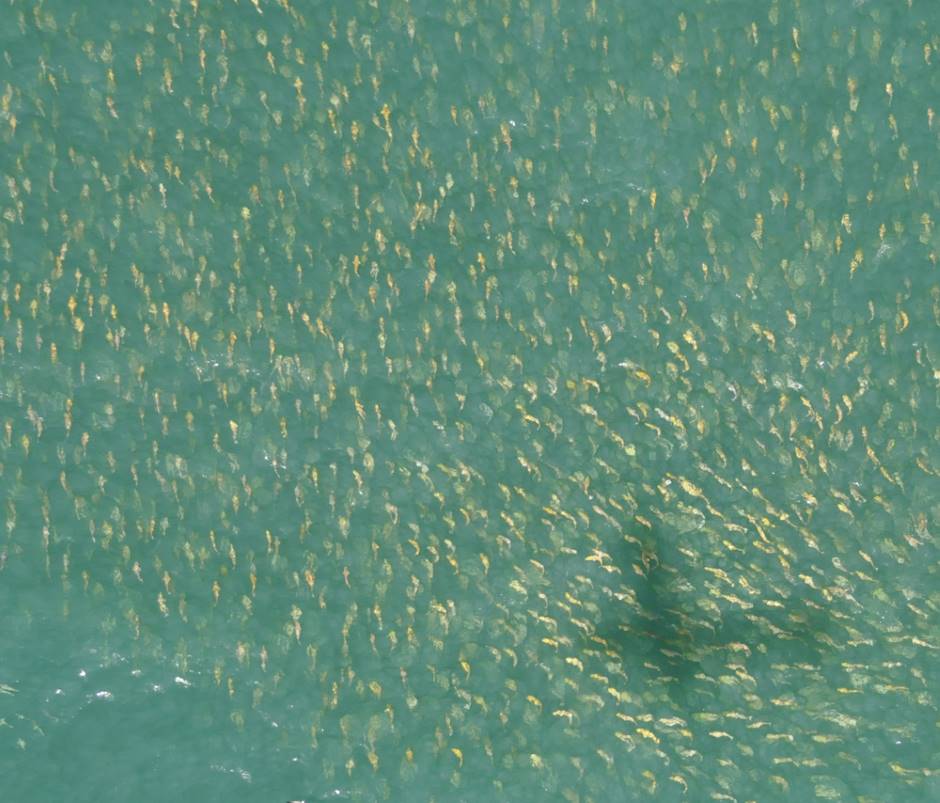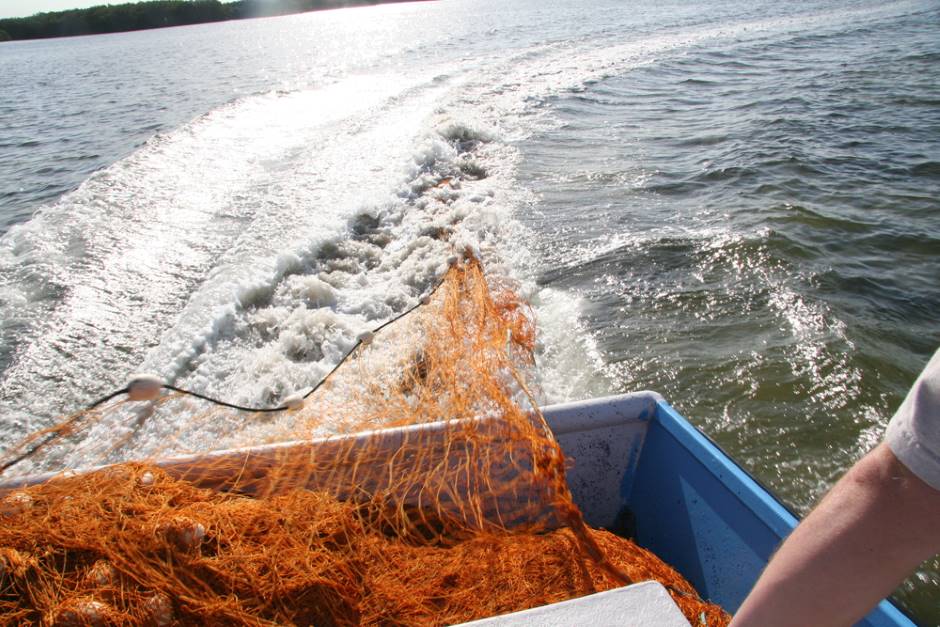Florida Redfish Population Look Healthier Decades After Commercial Ban
 A thousand-strong school of redfish in the shadow of a spotter plane. (Credit: Alison Amick/FWC & FWRI)
A thousand-strong school of redfish in the shadow of a spotter plane. (Credit: Alison Amick/FWC & FWRI)Popular in the early 1980s, redfish (also known as red drum) were a highly sought-after catch in the Gulf of Mexico. While the fish was popular with recreational anglers, commercial fishing charters also targeted the fish as a popular entrée. As a result, the population dropped rapidly, and the stability of the species in the region was threatened.
Fear of entirely losing the species in the gulf prompted the creation of a ban on commercial fishermen from catching redfish in offshore waters that are considered to be under government jurisdiction. The ban came as a result of recreational anglers pushing for commercial anglers to be banned from targeting the fish.
Unsustainable commercial fishing can result in the removal of large stocks of fish due to their highly effective nets—in contrast, the average recreational angler is more limited. The imbalance led recreational anglers to blame redfish declines on commercial charters that used massive nets to catch large numbers of redfish—leaving too few mature fish to maintain the population.
According to Texas Monthly, commercial anglers in the gulf argued that redfish populations declined as a result of cold fronts and droughts that led to raised salinity levels, not their fishing practices.
Impacts of Conservation Efforts
The ban was a highly controversial decision as commercial anglers and local restaurants relied on redfish for business. Still, according to Texas Monthly, restrictions began in 1977 with the introduction of catch limits—ten per recreational angler and 200 pounds per commercial fisherman.
Even with these restrictions, populations continued to dip, leading to the total commercial ban in the late 1980s. To this day, the ban on commercial angling continues while recreational anglers are permitted to catch redfish so long as they follow local catch limits and size limits.
A 2014 study shows the redfish population in some Florida waters looks better across its entire life cycle, from the juveniles in backwater nurseries to the adults that school offshore. The study relied on decades of data from a fisheries monitoring program that targeted redfish in every type of habitat they use throughout their 30-plus-year lives.
Methods of the study replicated a similar study published in 2001 that found very few fish older than 12 years old in the schools of adults. However, the 2014 research shows a greater number of older adult fish compared to the earlier research. The results of the later study possibly indicate that restrictions and restoration efforts have improved redfish health and population sizes over time.
Conclusion
States bordering redfish habitat have continued to enforce fishing regulations on redfish in order to protect the species and hopefully restore populations to their previous levels. The decision to ban commercial fishing of redfish was a highly controversial decision, but it is still an activity that receives public attention.
Monitoring efforts help to inform resource managers of annual populations as well as how to best support the species. Well-informed management could lead to future changes in local restrictions when the population has been stabilized.



0 comments